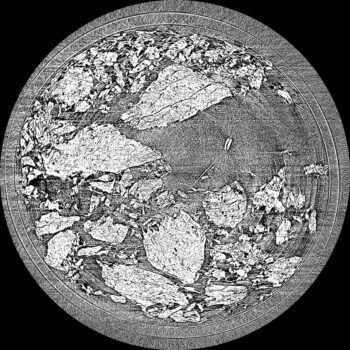
The ENIGMA Science Focus Area (SFA) is a multi-disciplinary research effort working to develop a deeper understanding of the effect of anthropogenic pollution on subsurface microbiology. ENGIMA specifically studies the subsurface site within the Y-12 Area of the Oak Ridge Reservation (ORR), located in Oak Ridge, Tennessee that is contaminated with high concentrations of multiple heavy metals, nitrate, and low pH. The complex first began refining uranium during World War II and has a history of hazardous groundwater contamination, not only from uranium but also acids, heavy metals, and nitrates. By pooling their expertise in environmental and laboratory biology and modeling, the ENIGMA researchers hope to develop a model that accurately predicts how microbial communities affect critical ecosystem processes at Y-12.
ENIGMA researchers are currently examining the influence of these environmental stressors on critical microbial processes within the ORR ecosystem with the understanding that these models could be applied to other watersheds where anthropogenic impacts affect microbial communities. Due to the high concentrations of nitrate at the site, a particular interest is studying how these human-caused disturbances influence microbial transformations of nitrogen compounds such as nitrate, nitrite, and nitrous oxide.
Research Aims
To accomplish these goals, ENIGMA is organized into three aims reflective of different research scales (i.e., field level to molecular level).
Subsurface Observatory
Researchers working within the Subsurface Observatory aim are characterizing the microbial ecology of the contaminated ORR subsurface by collecting data on both the microbial community and geochemistry (i.e, pH, nitrate levels, heavy metal levels) of the site. These studies will show us how the anthropogenic perturbations influence the native microbial community present at this site.
Environmental Atlas
Building off Subsurface Observatory field observations, researchers within Environmental Atlas are working to isolate a collection of microorganisms reflective of the biodiversity found in the contaminated ORR subsurface. Once completed, it will include high-resolution microscopy images, growth data, and genomic data for each ORR isolate.
Environmental Simulations
Researchers in the Environmental Simulations and Modeling team aim to simulate, model, and predict the mechanistic underpinnings of ORR field observed phenomena. This includes characterizing the microbial process partitioning of N2O emissions in varying ecological contexts (pH, metal availability, oxygen, and phage attack) using field isolates assembled into synthetic communities (SynComs).
